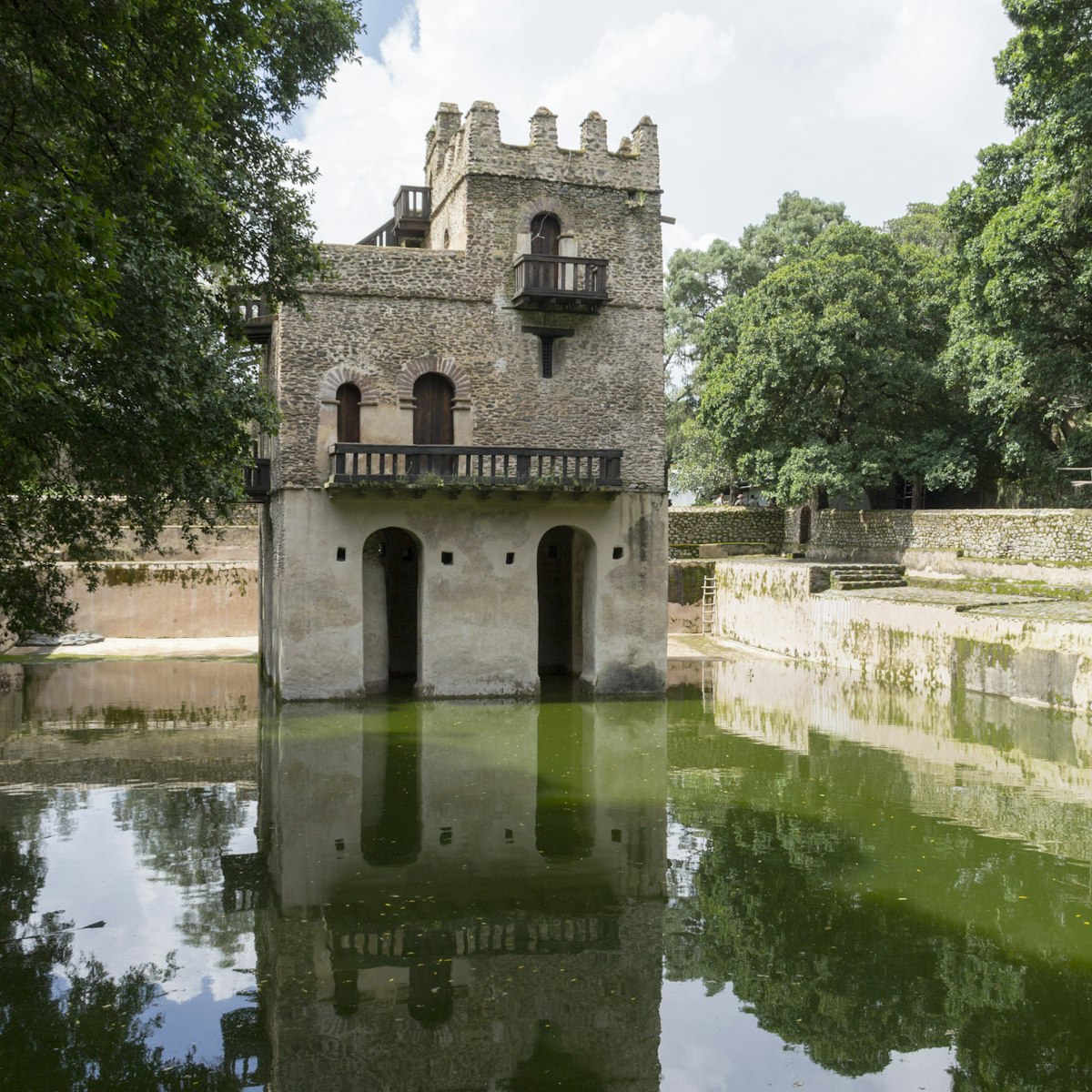The Gonder of yesteryear was a city of extreme brutality and immense wealth. Today the wealth and brutality are gone, but the memories linger in this amazing World Heritage site. The entire 70,000-sq-metre compound containing numerous castles and palaces has been restored with the aid of Unesco. Knowledgable, well-trained guides cost Birr200 and are well worth it.
Fasiladas’ Palace
By far the most impressive, and also the oldest, building is Fasiladas’ Palace, just inside the entrance gate. It stands 32m tall and has a crenulated parapet and four domed towers. Made of roughly hewn stones, it’s reputedly the work of an Indian architect and shows an unusual synthesis of Indian, Portuguese, Moorish and Aksumite influences. The main floor was used as dining halls and a formal reception area. Note the wall reliefs, including several Stars of David, which trumpet Fasiladas’ link to the Solomonic dynasty. The small room in the northern corner boasts its original beam ceiling and some faint frescoes. On the 1st floor, Fasiladas’ prayer room has windows in four directions, each overlooking Gonder’s important churches. Religious ceremonies were held on the roof, and it was from here that he addressed his people. Above Fasiladas’ 2nd-floor bedroom was the watchtower, from where it’s (apparently) possible to see all the way to Lake Tana. Behind the castle are various ruined buildings, including the kitchen (domed ceiling), steam bath and water cistern.
Palace of Iyasu I
To the palace’s northeast is the saddle-shaped Palace of Iyasu I, with its unusual vaulted ceiling. The son of Yohannes I, Iyasu I (r 1682–1706) is considered the greatest ruler of the Gonderine period. The palace used to be sumptuously decorated with gilded Venetian mirrors and chairs, with gold leaf, ivory and beautiful paintings adorning the walls. Visiting travellers described the palace as ‘more beautiful than Solomon’s house’. Although a 1704 earthquake and British bombing in the 1940s have done away with the interior and most of the roof, its skeletal shell reeks of history.
Other Southern Buildings
North of Iyasu’s palace are the relics of its banquet hall and storage facilities. To the west is the quadrangular library of Fasiladas’ son, Yohannes I (r 1667–82), which was plastered over by the Italians in a nonhistoric renovation. (In fact, all plaster found in the Royal Enclosure compound was added by the Italians.) Once an impressive palace decorated with ivory, only the tower and walls of Fasiladas’ Archive remain. It sits northwest of the library.
Northern Buildings
The compound’s northern half holds vestiges of Dawit’s Hall, known as the House of Song, in which many religious and secular ceremonies and lavish entertainments took place. Emperor Dawit (r 1716–21) also built the first of two Lion Houses (the second was built by Haile Selassie) where Abyssinian lions were kept until 1990. When Dawit came to a sticky end (he was poisoned in 1721), Emperor Bakaffa (r 1721–30) took up the reins and built his palace with a huge banqueting hall (the current ceiling was added by the Italians) and the impressive stables. Between the stables and Dawit’s Hall is the Turkish bath (wesheba), built by Iyasu I at the advice of a French physician to deal with his skin conditions. It apparently also worked wonders for those suffering from syphilis! At the southern end you’ll see the fire pit and the ceiling’s steam vents. The Italians added windows and made it a kitchen.
Bakaffa’s consort was responsible for the last palace, Mentewab’s Castle, a two-storey structure that’s now the site’s office. Note the Gonderian cross being used as a decorative motif. Mentewab (r 1730–55) also built the women’s vocational school to the front, where classes included facial tattooing and chicken cutting.
Atatami Mikael Church
Atatami Mikael church, just outside the Royal Enclosure’s exit gate, was built by Emperor Dawit III. The church itself is off-limits, but the interesting little museum (Birr25) has lots of beautiful illustrated manuscripts and a few other items such as giant pots for making beer.



